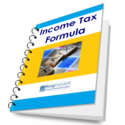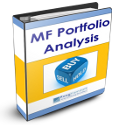This article describes how the strategy of Dividend Yield can be used to generate regular income, and get capital gains as a bonus!
Are you risk averse? Would you prefer a fixed, consistent income stream instead of seemingly erratic returns generated by stocks? If so, you would prefer instruments like Post Office Monthly Income Stream (PO MIS) or Bank Fixed Deposits (FDs).
While the returns from investments in stocks are unpredictable in the short term, these instruments can provide a regular and consistent income stream. But the downside is that the returns are limited, and usually are just about adequate to beat inflation. They lack the growth kicker that stocks can provide.
But what if you get a regular income, and long term growth? Sounds too good to be true? Well, if planned properly, this can be achieved using the strategy of Dividend Yield.
What is Dividend?
To understand the strategy, first lets understand what dividend is.
The ownership in a company is defined through its shareholders – anyone who owns a share of a company is a part owner of the company. (For more information, please read “Want to own a company? Buy stock!”).
All companies strive to make a profit from their day-to-day operations. This profit can be stated in absolute terms as Net Profit or Profit After Tax, or it can be represented on a per-share basis in the form of Earnings Per Share or EPS.
The company usually decides to reinvest some of this profit for its expansion and modernization (this is called Plowback of its profit), and distributes the remaining profit to its shareholders in the form of Dividend. (The ratio of dividend paid out to shareholders to the total earnings per share – EPS – is called the Dividend Payout Ratio).
Thus, dividend is a portion of the profit that is paid out to the owners of the company (that is, to its shareholders).
Note: Some companies do pay out a dividend even when they do not make a profit. This dividend is usually paid out of reserves, which is nothing but unspent profit from the previous years. In my opinion, this kind of dividend payment is not very healthy, and is not good for long term investors in the company.
What is Dividend Yield?
Dividend yield is the ratio of dividend per share (in Rupees) and the market price of the share. It is expressed in percentage, just like the yields on fixed deposits (FDs).
Dividend Yield = ( Dividend Per Share / Market Price ) * 100
For example, if the dividend per share is Rs. 10, and the market price of the share is Rs. 400,
Dividend Yield = (10 / 400) * 100 = 2.5%
Now, if the dividend is fairly consistent, a parallel can be drawn to banks FDs – Isn’t it similar to investing Rs. 400 in an FD, with the interest rate being 2.5%?
On the face of it, yes. But remember, the interest received on bank FDs is fully taxable in the hands of the investor, while dividend is tax free. Thus, in effect, it is equivalent to investing Rs. 400 in an FD, with the interest rate being 3.57% for an investor in the highest tax bracket.
Interesting, isn’t it?
What kind of companies to invest in?
Very interesting, yes. But the only condition is – the dividend should be fairly consistent. Only then, a conservative investor can utilize this strategy in place of investing in FDs.
So, we need to look for companies that have a record of consistent dividend payments. But don’t worry – there are many good companies that pay regular dividends.
In general, companies in high growth industries, like Telecom or Information Technology, plow back most of their profits to fuel their growth. So, they usually don’t declare attractive periodic dividends.
But companies that are in mature industries and are the leaders in their fields usually have lesser need to reinvest their profits. These are the companies that declare handsome dividend, time after time. And these are the companies you should invest in to implement the strategy of dividend yield.
Advantages of the Dividend Yield Strategy
There are two BIG advantages of the Dividend Yield strategy:
Capital Growth
Since you invest in stocks as a part of this strategy, naturally, you also reap all the benefits of investment in stocks. And the biggest advantage is Capital Growth.
This means that the dividend you receive gives you a fairly regular income, and the capital growth (in the form of an increase in the stock price) keeps you ahead of inflation.
Best of both worlds, isn’t it?
Dividend Yield increases over time
Now this is very important. The calculation of dividend yield uses the market price of the stock. Thus, in our example, dividend yield was 2.5%.
Now, since you are a long term investor, you buy a stock and hold it for a long term. During this time, the stock may undergo stock splits and bonuses. Also, the price of the stock goes up over time. This means that although the prevailing price of the share is high, your cost of acquisition of the stock could be fairly lower compared to the market price.
In that case, what is the yield for you? Let’s stick to our example – the market price is Rs. 400, and the dividend per share is Rs. 10. Also, due to increase in the stock price over time and due to stock split and bonus, your cost per share is Rs. 200.
In this case, although the dividend yield is 2.5%, the yield for you is:
Yield = (Rs. 10 / Rs. 200) * 100 = 5%.
And this is equivalent to an FD with the rate of interest of 7.14%.
Isn’t this great? This means that the dividend yield strategy give you not just regular income and capital growth, but also an increase in the regular income over time!
Income Tax Treatment
As discussed earlier, the interest received on bank Fixed Deposits (FDs) is fully taxable in the hands of the investor, while dividend received is tax free. Thus, the effective yield for an investor in the highest tax bracket is even better.
Effective Yield = Dividend Yield / (1 – Your tax rate / 100)
Thus, for people in the highest tax bracket,
Effective Yield
= Dividend Yield / (1 – 30 / 100)
= Dividend Yield / (1 – 0.3)
= Dividend Yield / 0.7
One very important point to note is that dividend is tax free only for long term investors. If you buy a share and sell it after receiving the dividend, it is called Dividend Skimming. Dividend received in this case is fully taxable in your hands.





